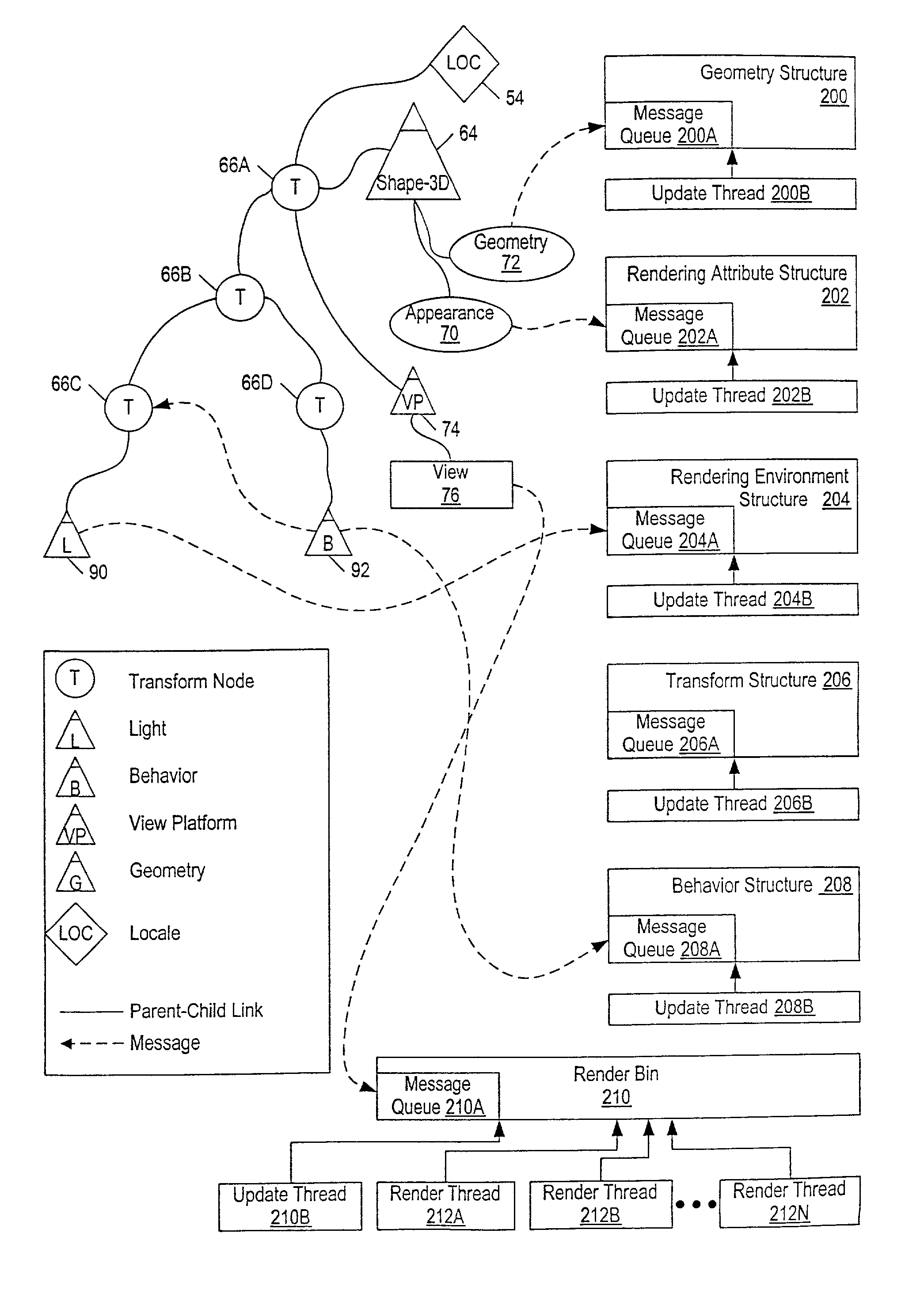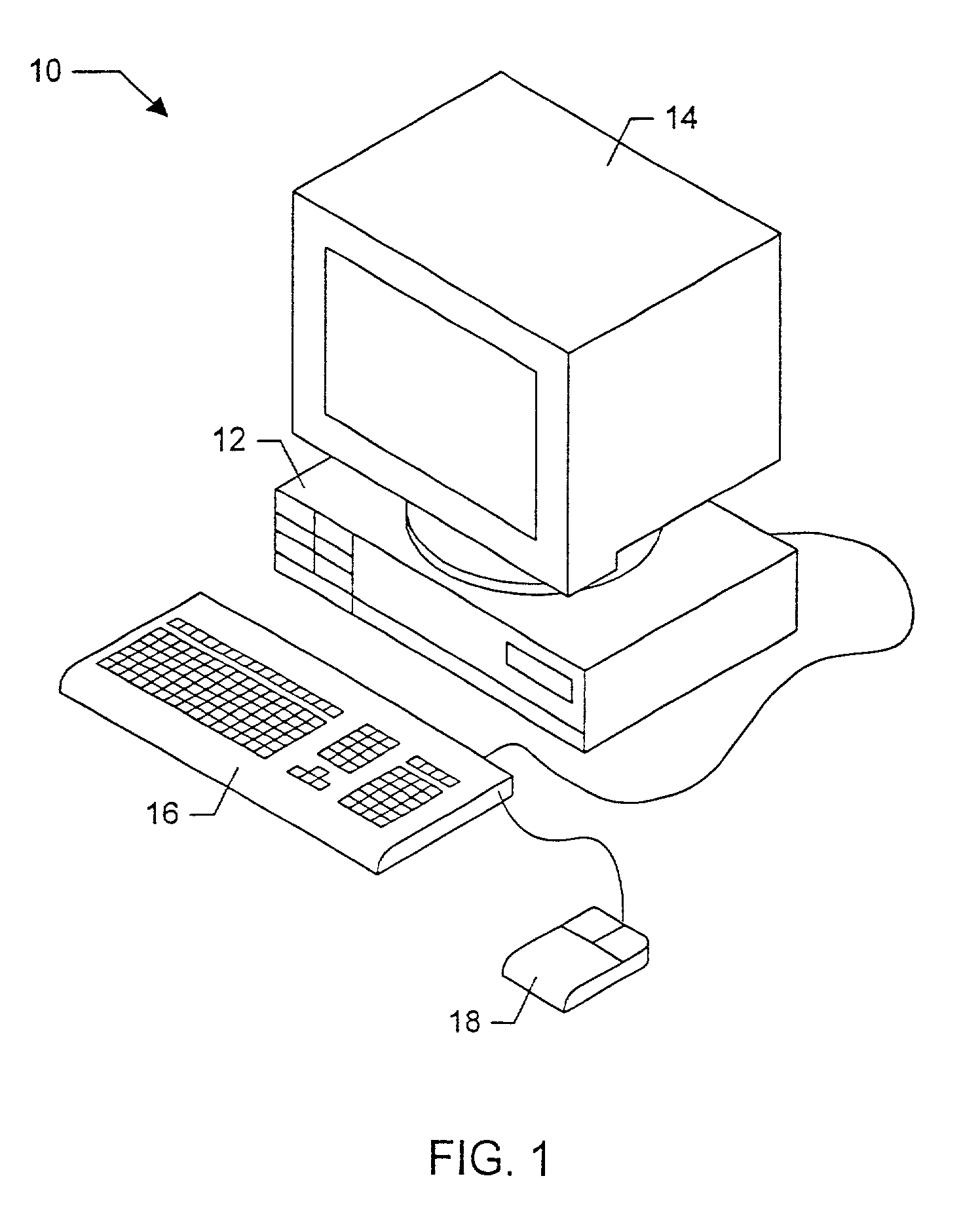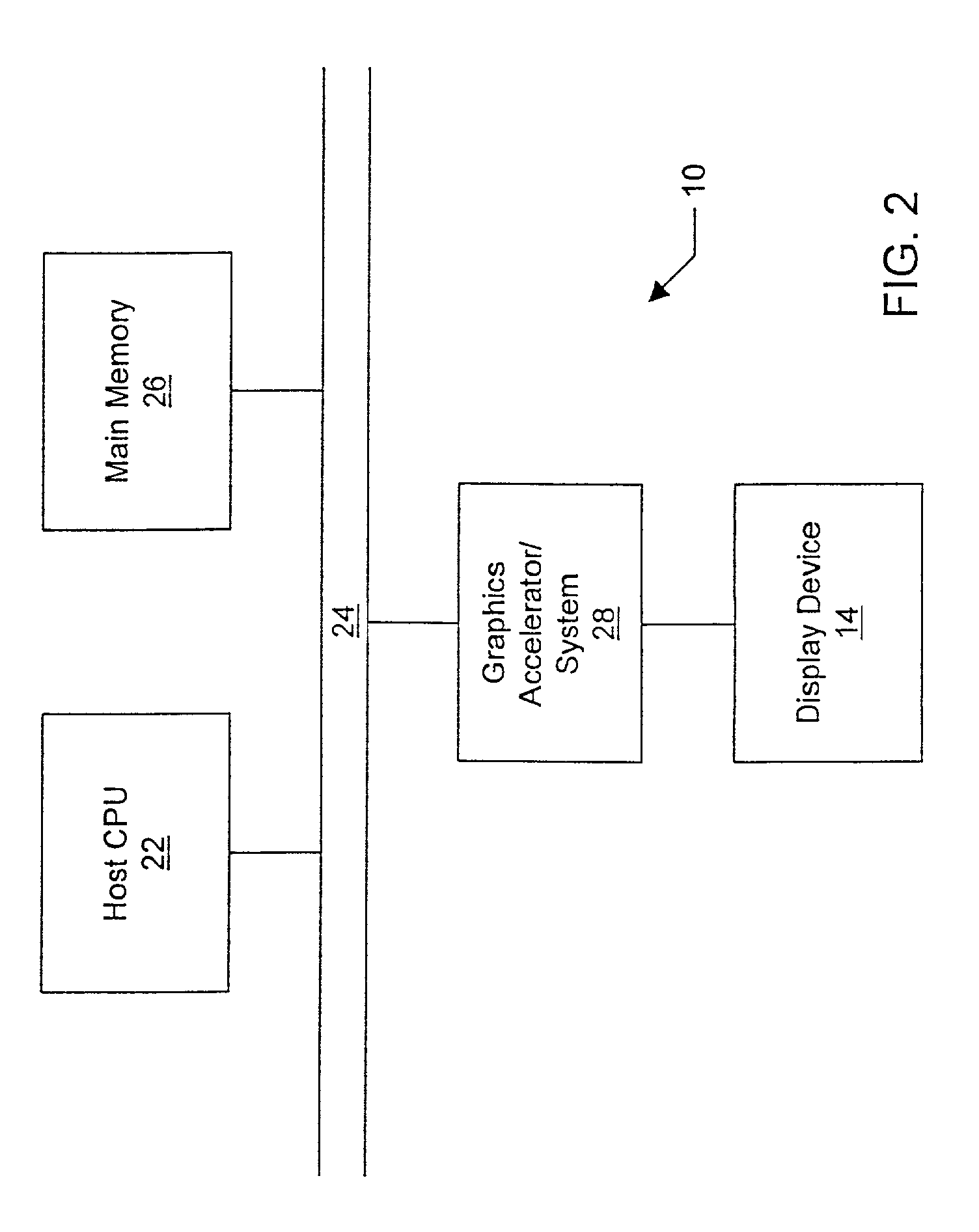Using render bin parallelism for rendering scene graph based graphics data
a technology of scene graph and graphics data, applied in the field of computer graphics, can solve the problems of increasing the complexity and amount of data being sent to the display device, affecting the display effect, and incorporating graphics processors with a great deal of processing power,
- Summary
- Abstract
- Description
- Claims
- Application Information
AI Technical Summary
Benefits of technology
Problems solved by technology
Method used
Image
Examples
Embodiment Construction
Computer System—FIG. 1
[0036]Referring now to FIG. 1, one embodiment of a computer system 10 that may used to implement the system and method described above is illustrated. The computer system may be used as the basis for any number of various systems, including a traditional desktop personal computer, a laptop computer, a network PC, an Internet appliance, a television, including HDTV systems and interactive television systems, personal digital assistants (PDAs), and other device which displays 2D and or 3D graphics.
[0037]As shown in the figure, computer system 10 comprises a system unit 12 and a video monitor or display device 14 coupled to the system unit 12. The display device 14 may be any of various types of display monitors or devices (e.g., a CRT, LCD, or gas-plasma display). Various input devices may be connected to the computer system, including a keyboard 16 and / or a mouse 18, or other input device (e.g., a trackball, digitizer, tablet, six-degree of freedom input device,...
PUM
 Login to View More
Login to View More Abstract
Description
Claims
Application Information
 Login to View More
Login to View More - R&D
- Intellectual Property
- Life Sciences
- Materials
- Tech Scout
- Unparalleled Data Quality
- Higher Quality Content
- 60% Fewer Hallucinations
Browse by: Latest US Patents, China's latest patents, Technical Efficacy Thesaurus, Application Domain, Technology Topic, Popular Technical Reports.
© 2025 PatSnap. All rights reserved.Legal|Privacy policy|Modern Slavery Act Transparency Statement|Sitemap|About US| Contact US: help@patsnap.com



